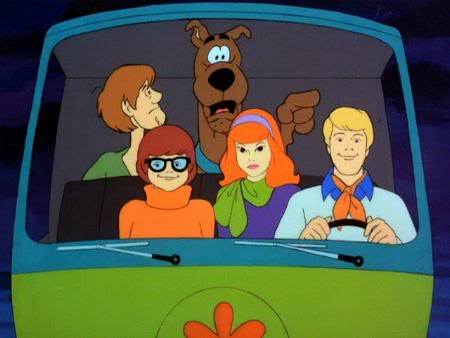The American way of expressing distances by drive time - what does that include?
Context.
“was on the road for 10 hours” includes stops.
“It’s a straight 10 hour drive to Boston” does not include stops.
I usually say something like “10 hours, plus stops,” to avoid confusion.
This is the way.
If I’m telling someone else how long a drive will be, I tell them the drive time without stops. If I’m telling someone how long a drive is/was for me personally, I’ll include time for stops and note how many times I stopped along the way, for context
Correct, when directly replacing estimated time instead of distance, no stops is customary.
I have no idea how many stops you need or how long they’ll be. That’s on you.
I never realized how different people take this. For me it’s a definite no. A 10 hour drive is how long it takes without breaks, because it makes no sense to have it included, since everyone’s breaks would vary in length.
People are not usually counting that, but it’s not as if it’s a standard. Sometimes they mean how long the overall trip takes, other times, simply the distance divided by the average speed limit.
The time is usually an estimate, or the best case scenario in my head. If I have to stop and add more time, I do. But 10 hours is probably what google maps told me it is. I drove straight 9 hours or so once, I think I stopped twice to use the bathroom/get a snack. Got there at 2am. It was rough, wouldn’t do it again.
I drove from Albuquerque NM to Tacoma WA in two days by myself. That one was pretty rough.
I generally go off of what the GPS says because time is a blur for me unless I take specific note.
As an Australian, not an American, we drive long distances too. We express in km/h and km, not mph and miles. Due to high risks of sleeping on long straight empty roads, rest breaks are taken seriously here. I’d consider a 10 hour drive as door to door including minimal breaks. It would be foolhardy to drive without breaks. However, if I was describing the distance without breaks, I’d say that. If I was taking longer breaks, I’d say it too, for clarity.
My in laws live near the border of the next state. It’s a 6 hour drive without stopping. I’d describe it as a 7 hour drive, door to door. We have done it in 9 hours with stops in playgrounds for the kids. If I was describing that I’d still describe it as a 7 hour drive that we took extra breaks, so it took 9.
Similar to your “door to door with minimal breaks” - as an American, a ten hour drive is the minimum it could take. Yes we should take breaks more seriously
For example, I say it’s a 14 hour drive to my brother’s house. That means I grab breakfast on my way out of town, stop for gas and fast food lunch (perhaps to go), stop for gas and fast food dinner, then get there 14 hours later. If you take more than minimal breaks, it’s up to you to do the math
Generally you stop every 2-4 hours to stretch your legs, go to the bathroom, get fuel, etc.
So if Google Maps says a drive takes 10 hours, I would factor at least another 1.5 hours for stops and a meal somewhere along the way. So 11.5 hours or so if you don’t stay stopped too long. 0 miles per hour brings the average down quickly.
Nah, if Google maps says it takes 10 hours, then it takes 10 hours with stops unless you’re in the bottom 10% of traffic (such as if you’re a truck towing a trailer).
If you’re like most people going 5 to 10 mph over, then you’ll beat Google maps time by about 15 minutes per 2 hours of drive time without stopping.
In my experience for long trips Google Maps doesn’t account for stops, especially if you’re stopping for sit-down meals or traveling with several people. In fairness Google would have no way to gauge that. More people = more delays usually. For a solo driver stopping only for fuel, bathroom, and a few snacks it should be accurate. But just one exit where the place you’re going turns out to be a few miles off the Interstate can easily cost you 30 minutes extra.
12 parsecs
Driving at a leisurely 47 attoparsecs per nanocentury
It usually doesn’t include breaks but it’s also never expected to be used as anything other than an approximation.
Personally, that includes gas station stops, but not much beyond that.
To me, it includes breaks to refuel and use the restroom, and if it’s more than maybe 6 hours, will factor in the time to scarf down a fast-food meal. Also, any time this discussion involves “X hours” it’s undoubtedly being rounded and estimated, and it will involve a hundred different little variables like traffic, road construction, the driver’s tolerance for speeding a bit, etc. Also, don’t forget that it’s common, but not formal, so there’s no single way people are taught, and different contexts will require different levels of accuracy.
It’s crazy how big the variables can be as well. Both my ex and I have family in the Baltimore-Washington-Virginia area: for the same trip, she called it a 6.5 hour drive whereas I called it a 9 hour drive. We were both right, with the biggest variable being what traffic through or past NYC would be like depending on what time each of us liked to start driving
The 7 hour drive I had last week included one stop for gas, but that’s it. We usually refer to the amount of time the gps says it will take.
You went approximately 100 miles in seven hours. Thank you for driving safely.
Hmm well it was 430 miles but yes I did drive safely.
Depends on the person. If me and my mother are talking about going to and from the same location, I may say it is an 18 hour drive because I only stop for fuel and quick pee breaks. My mother would say its a 24-25 hour drive because she drives slower and takes longer/more frequent breaks
It depends on the distance, or how it was expressed. Less than 12 hours, or exact times, probably means just the actual driving time before any stops. Really long spans of time, or when someone says something fuzzy like “a half-day drive,” you can probably assume are accounting for a break or two.
To answer your specific question, if someone said “a 10 hour drive” to me, I would assume they meant 10 actual road hours, before breaks. I would anticipate their actual arrival in an 11 to 12 hour time frame.










